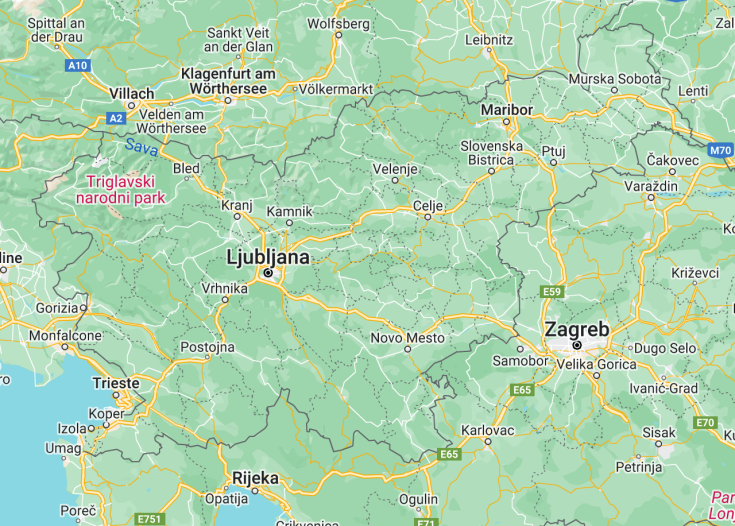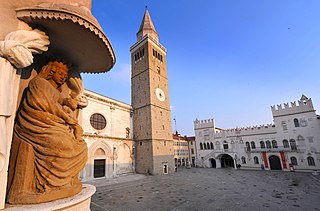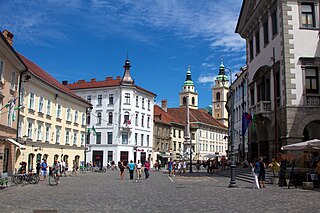Slovenia, a hidden gem in Central Europe, offers a diverse range of experiences for travelers to explore. From the stunning landscapes of Lake Bled and Triglav National Park to the charming capital city of Ljubljana, this small country is rich in natural beauty and cultural heritage.
Discover the enchanting beauty of Lake Bled, where you can take a boat ride to the island and climb up to the medieval castle for breathtaking views.
Explore the vibrant streets of Ljubljana, lined with colorful buildings and charming cafes. Don’t miss the iconic Triple Bridge and the stunning Ljubljana Castle, offering panoramic views of the city.
Slovenia: A Hidden Gem in Central Europe
| Capital | Ljubljana |
| Time in Slovenia | GMT+1 |
| Language spoken | Slovenian |
| Population | 2.08 million (World Bank, 2021) |
| Religion | Roman Catholic (74.8%) Muslim (2.4%) Orthodox (2.3%) Unaffiliated (10.1%) Other/Unknown (10.4%) |
| Currency | Euro (€, EUR) |
| Airports | Ljubljana Jože Pučnik Airport Maribor Edvard Rusjan Airport Portorož Airport |
Slovenia: A Hidden Gem in Central Europe. Nestled between Austria and Italy, Slovenia showcases breathtaking alpine landscapes, picturesque coastal towns, and charming medieval cities. With an intriguing history that dates back to prehistoric times, this small country boasts a diverse cultural heritage and a perfect blend of natural beauty and architectural wonders.
Where is Slovenia located?
Slovenia is located at the crossroads of Central Europe and the Balkans. It shares borders with Austria to the north, Italy to the west, Hungary to the northeast, and Croatia to the south and southeast.
What is Slovenia famous for?
Slovenia is famous for its stunning landscapes, including the scenic Lake Bled, Triglav National Park, and the Soča Valley. The country is renowned for its outdoor activities, such as hiking, skiing, and rafting. Additionally, Slovenia is known for its rich cultural heritage, with charming cities like Ljubljana and Piran offering architectural marvels and a vibrant arts scene.
History
Slovenia, officially known as the Republic of Slovenia, is a country located in southern Central Europe. Its history dates back to prehistoric times, with archaeological evidence showing that the area was inhabited as far back as the Stone Age. Throughout its history, Slovenia has been influenced by various cultures and empires, including the Roman Empire, the Holy Roman Empire, and the Habsburg Monarchy.
Prehistoric Times to the 6th Century AD
During prehistoric times, the area now known as Slovenia was inhabited by various tribes and cultures. The Illyrians, Celts, and Romans all left their mark on the region. Slovenia was part of the Roman Empire, and numerous Roman settlements were established, including the ancient city of Emona (present-day Ljubljana).
6th Century AD to the 15th Century AD
In the 6th century AD, the Slovene ancestors, known as the Slavs, began to settle in the region. The Slavs established the foundations of the Slovenian language and culture. In the following centuries, Slovenia was ruled by various powers, including the Franks, the Bavarians, and the Holy Roman Empire. The region experienced feudalism and the consolidation of power among feudal lords.
15th Century AD to the 19th Century AD
In the 15th century, Slovenia came under the rule of the Habsburg Monarchy, which lasted until the end of the 19th century. During this time, Slovenia experienced cultural and economic growth, particularly in the areas of art, literature, and education. The Slovene language began to flourish, with the Slovene Protestant Reformation playing a significant role in the development of the language and the spread of literacy.
20th Century
In the 20th century, Slovenia went through significant political changes. After the dissolution of the Austro-Hungarian Empire at the end of World War I, Slovenia became part of the Kingdom of Serbs, Croats, and Slovenes, which later became known as Yugoslavia. During World War II, Slovenia was occupied by Axis powers. After the war, Slovenia became one of the six republics of the Socialist Federal Republic of Yugoslavia.
In 1991, Slovenia declared independence from Yugoslavia and became a sovereign nation. Since its independence, Slovenia has experienced a period of political stability and economic growth. It joined the European Union in 2004 and adopted the euro as its currency in 2007. Today, Slovenia is a member of numerous international organizations and is known for its natural beauty, rich cultural heritage, and thriving tourism industry.
Visit Slovenia
What to see and do in Slovenia.
Slovenia offers a wide range of attractions for visitors to explore. With its diverse landscapes, charming cities, and rich cultural heritage, there is something for everyone in this small but captivating country. Here are some of the top things to see and do in Slovenia:
-
- Visit Lake Bled and take a boat ride to the iconic Bled Island.
- Explore the enchanting capital city of Ljubljana and its picturesque old town.
- Discover the underground world of Postojna Cave, one of the largest karst caves in Europe.
- Hike in the stunning Triglav National Park and climb Slovenia’s highest peak, Mount Triglav.
- Visit the charming coastal town of Piran and enjoy the Adriatic Sea.
- Explore the historic town of Ptuj and its well-preserved castle.
- Taste the delicious local cuisine, including traditional dishes such as potica and štruklji.
Events in Slovenia
Slovenia hosts a variety of events throughout the year, showcasing the country’s vibrant culture and traditions. Here are some notable events in Slovenia and the periods in which they take place:
-
-
- Maribor Theatre Festival (October): A renowned international theater festival held in Maribor, featuring performances by local and international theater groups.
- Planica Ski Jumping World Cup (March): A popular winter sports event held in Planica, attracting top ski jumpers from around the world.
- Dragon Carnival in Ptuj (February): A traditional carnival celebration in Ptuj, known for its colorful parades and masked participants.
- Ljubljana Summer Festival (July-August): A month-long festival in Ljubljana, featuring various cultural events, including music, dance, theater, and film.
- Piran Musical Evenings (July-August): A series of classical music concerts held in the charming coastal town of Piran.
-
Best time to visit Slovenia
The best time to visit Slovenia depends on personal preferences and interests. The country has a diverse climate, with warm summers and cold winters. Spring (April to June) and autumn (September to October) are generally considered pleasant seasons to visit, with mild temperatures and fewer crowds. These seasons are ideal for outdoor activities and sightseeing.
Summer (July to August) is the peak tourist season in Slovenia, with warm weather and various cultural events taking place. It’s a great time to explore the lakes and enjoy outdoor activities. However, popular tourist areas can get crowded during this time.
Winter (December to February) is a popular time to visit Slovenia for winter sports enthusiasts. The country offers excellent skiing and snowboarding opportunities in its mountainous regions. The Christmas markets in cities like Ljubljana and Maribor also attract visitors.
Is Slovenia worth visiting?
Yes, Slovenia is definitely worth visiting. Despite its small size, the country offers a remarkable array of natural landscapes, historic sites, and cultural treasures. Whether you’re drawn to the breathtaking views of Lake Bled, the charming streets of Ljubljana, or the underground wonders of Postojna Cave, Slovenia has something to offer every traveler.
Furthermore, Slovenia prides itself on its sustainable tourism initiatives, making it an ideal destination for eco-conscious travelers. The country’s commitment to preserving its natural beauty and cultural heritage is evident in its well-maintained national parks, protected areas, and eco-friendly accommodations.
From outdoor enthusiasts seeking adventure in the Julian Alps to history buffs exploring the medieval castles and charming towns, Slovenia has plenty to satisfy every traveler’s wanderlust. Don’t miss the opportunity to experience the beauty and warmth of this hidden gem in the heart of Europe.
Common questions
-
- Potica: a rolled pastry filled with various sweet fillings such as walnuts, tarragon, or poppy seeds.
- Kranjska klobasa: a traditional Slovenian sausage made from finely minced pork.
- Štruklji: rolled dumplings filled with various fillings like cottage cheese, walnuts, or tarragon.
- Idrijski žlikrofi: dumplings filled with potato and served with various sauces.
- Gibanica: a layered pastry dessert made with apples, walnuts, poppy seeds, and cheese.
-
- Planica Ski Jumping World Cup: A thrilling ski jumping competition held in Planica, attracting top athletes from around the world.
- Maribor Grape Harvest Festival: A lively celebration of the grape harvest season in Maribor, featuring wine tastings, parades, and traditional performances.
- Dragon Carnival: A colorful carnival procession held in Ljubljana, featuring elaborate costumes, music, and dancing.
- Ptuj Carnival: One of the oldest and most traditional carnivals in Slovenia, held in Ptuj, featuring parades, masks, and festive entertainment.
What are the must-visit attractions in Slovenia?
What is the best time to visit Slovenia?
What are some traditional dishes to try in Slovenia?
What are some popular outdoor activities in Slovenia?
What are the best hiking trails in Slovenia?
What are the popular wine regions in Slovenia?
What are the top natural wonders in Slovenia?
What are the UNESCO World Heritage sites in Slovenia?
What are the best cities to visit in Slovenia?
What are the best places in Slovenia for a winter vacation?
What are the traditional festivals and events in Slovenia?
These festivals and events offer a unique insight into Slovenia’s culture, traditions, and local customs.


















